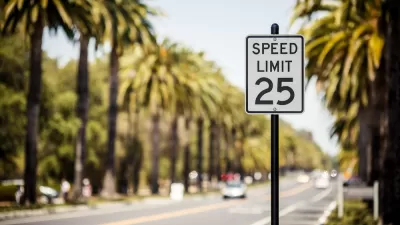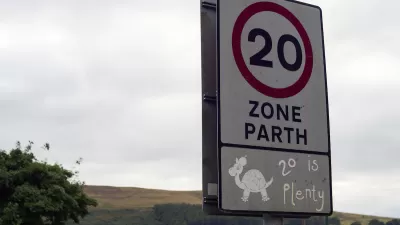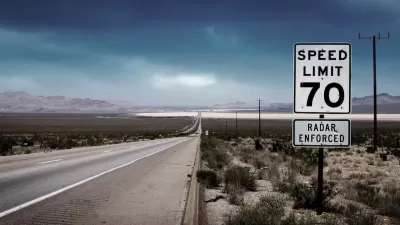More than half of drivers would be comfortable with speed-limiting technology or audio and visual signals warning them they’ve gone over the speed limit.

A new survey from the Insurance Institute for Highway Safety (IIHS) shows that over 60 percent of the more than 1,800 drivers surveyed wouldn’t mind if their cars provided ‘audible and visual’ warning signals when they exceed the speed limit.
According to a piece in GovTech by Dave Werner, “about half of drivers say they wouldn’t mind technology that makes the accelerator pedal harder to press or automatically restricts speed.”
The survey reveals a surprising level of comfort with speed governing technologies, also known as Intelligent Speed Assistance (ISA), hinting that their adoption may not be as difficult in the United States as some have hypothesized. This matters because “Any version of ISA likely to be adopted in the U.S. would give drivers the option to switch it off, so it will only be beneficial to the extent that the public finds it acceptable.” The European Union is already requiring the technology as of this July.
As Werner explains, “More robust ISA systems sound a warning or flash an alert when the driver exceeds the limit — or when they exceed it by more than a specific amount. Others provide accelerator feedback — making the pedal harder to push — or restrict power to the engine to prevent the driver from going too fast.”
An even higher number of respondents said they would like to see the speed limit prominently displayed (80 percent), while 70 percent wanted an unobtrusive tone to notify them of speed limit changes, signaling a preference for ‘advisory systems’ over those that physically intervene.
FULL STORY: Study: Most Drivers OK With Anti-Speeding Technology

Study: Maui’s Plan to Convert Vacation Rentals to Long-Term Housing Could Cause Nearly $1 Billion Economic Loss
The plan would reduce visitor accommodation by 25,% resulting in 1,900 jobs lost.

North Texas Transit Leaders Tout Benefits of TOD for Growing Region
At a summit focused on transit-oriented development, policymakers discussed how North Texas’ expanded light rail system can serve as a tool for economic growth.

Using Old Oil and Gas Wells for Green Energy Storage
Penn State researchers have found that repurposing abandoned oil and gas wells for geothermal-assisted compressed-air energy storage can boost efficiency, reduce environmental risks, and support clean energy and job transitions.

Santa Barbara Could Build Housing on County Land
County supervisors moved forward a proposal to build workforce housing on two county-owned parcels.

San Mateo Formally Opposes Freeway Project
The city council will send a letter to Caltrans urging the agency to reconsider a plan to expand the 101 through the city of San Mateo.

A Bronx Community Fights to Have its Voice Heard
After organizing and giving input for decades, the community around the Kingsbridge Armory might actually see it redeveloped — and they want to continue to have a say in how it goes.
Urban Design for Planners 1: Software Tools
This six-course series explores essential urban design concepts using open source software and equips planners with the tools they need to participate fully in the urban design process.
Planning for Universal Design
Learn the tools for implementing Universal Design in planning regulations.
Ascent Environmental
Borough of Carlisle
Institute for Housing and Urban Development Studies (IHS)
City of Grandview
Harvard GSD Executive Education
Toledo-Lucas County Plan Commissions
Salt Lake City
NYU Wagner Graduate School of Public Service





























